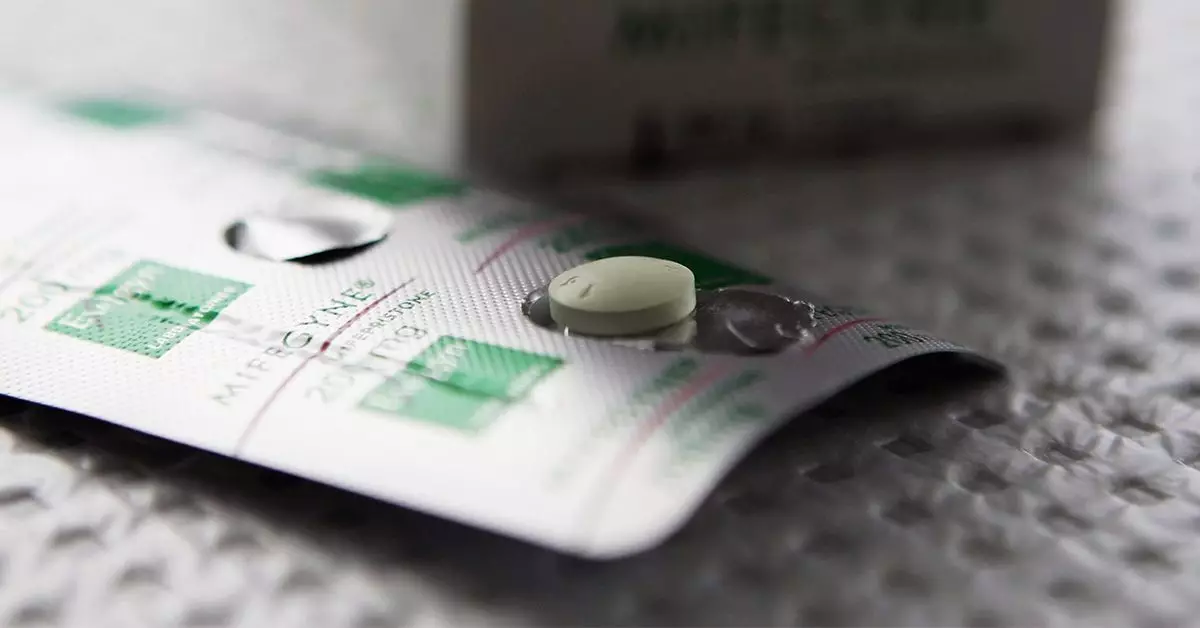The abortion pill, a non-invasive method to terminate early pregnancies, has garnered significant attention in discussions about reproductive health. This approach utilizes medication rather than surgical intervention to manage the process of ending a pregnancy, offering an alternative that many find more accessible and less intimidating. This article aims to explore the mechanics, effectiveness, side effects, and follow-up procedures associated with medication abortions, focusing specifically on the two primary drugs involved: mifepristone and misoprostol.
A Closer Look at the Abortion Pill
Medication abortions primarily rely on two essential drugs: mifepristone and misoprostol. Mifepristone is typically administered first, serving to block the hormone progesterone, which is vital for maintaining pregnancy. This blockage leads to the breakdown of the uterine lining, prompting the body to recognize that the pregnancy is no longer viable. Following this, misoprostol is taken, which induces contractions in the uterus to facilitate the expulsion of the pregnancy tissue.
The timing and method of administration for misoprostol can vary. Some healthcare providers may recommend taking it immediately after mifepristone, while others may suggest a wait of up to 48 hours. Regardless of the schedule, it’s crucial for those undergoing the procedure to follow medical advice closely for optimal results.
After taking the abortion pill, individuals can expect cramping and bleeding as the body begins the process of expelling the pregnancy. These symptoms often manifest a few hours after ingesting misoprostol and may resemble a heavy menstrual period. The intensity and duration of these effects can differ among individuals, depending on how far along the pregnancy is. While some may pass significant blood clots or tissue, it’s important to note that this is not universally experienced; the expelled tissue may sometimes be minimal or resemble normal menstrual flow.
If an individual does not experience any bleeding within 24 hours of taking the abortion pill or continues to have significant side effects, such as nausea or vomiting, it’s advisable to reach out to a healthcare professional for further assessment.
Side effects from medication abortions, including cramping and bleeding, are typically short-lived. Cramping often subsides within 24 hours after expulsion, although some may experience minor discomfort for an additional few days. On the other hand, light bleeding or spotting can persist for several weeks.
For those seeking relief from discomfort, over-the-counter pain relievers such as ibuprofen can be effective. It’s also common for individuals to have varying emotional responses during this time, and having a support system in place can significantly ease the transition.
Follow-Up Care and Confirmation of Abortion Success
After undergoing a medication abortion, follow-up care is critical in confirming that the procedure was successful. Healthcare providers typically recommend scheduling an appointment for further testing, which may include a blood test or ultrasound about a week post-ingestion of the medications. This step is essential to ensure the pregnancy has been successfully terminated.
It’s possible for individuals to use home pregnancy tests to check for pregnancy hormone levels, but results may be inconclusive if taken too early. It’s advised to wait a minimum of one month before using these tests for reliable results, as hormone levels do not decrease instantaneously after an abortion.
The efficacy of the abortion pill has been supported by various studies, with a notable 2022 population study indicating that 96.4% of participants achieved successful pregnancies termination via self-managed medication abortions. However, several factors can influence this success rate, including adherence to the recommended dosing schedule and the duration of the pregnancy before treatment.
Interestingly, research from 2023 also highlighted that misoprostol alone can yield high success rates, with 98.1% of participants experiencing a complete abortion when using just this medication. Although misoprostol can be effective on its own, the combined use with mifepristone is generally considered to be more reliable.
The abortion pill represents a safe and effective avenue for individuals seeking to terminate early pregnancies. By understanding how it works and recognizing the signs of its effectiveness, individuals can feel better prepared for the experience. While most will encounter minor discomfort that typically subsides within a few days, ongoing support, appropriate follow-up care, and open lines of communication with healthcare providers are fundamental to navigating this significant aspect of reproductive health. With continued discussions and education surrounding medication abortions, individuals can make informed choices that best align with their health and personal circumstances.

